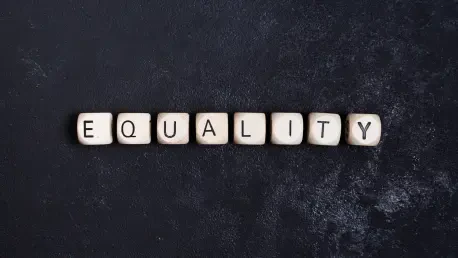Sports organizations have made significant strides in fostering diversity, equality, and inclusion (DE&I), driven by the need to reflect the communities they serve while enhancing innovation and performance. With an increasing focus on rectifying imbalances in participation among underrepresented groups, initiatives such as the Premier League’s Coach Inclusion Diversity Scheme and the Football Association’s Football Leadership Diversity Code exemplify efforts to level the playing field. However, these positive action schemes must be implemented carefully to ensure they don’t inadvertently become discriminatory. Legal frameworks like the UK’s Equality Act 2010 allow positive action to support groups historically disadvantaged due to protected characteristics such as race, sex, or disability. Yet, distinguishing between lawful positive action and unlawful positive discrimination represents a nuanced challenge. It is essential to assess these initiatives continuously based on evidence of disadvantage or underrepresentation while ensuring that the steps taken are both proportionate and targeted to avoid legal and reputational pitfalls.
Positive Action and Legal Boundaries in Sports
Positive action initiatives are grounded in the legal provisions of the Equality Act 2010, which permit actions favoring underrepresented groups to promote participation, accessibility, and equality. The Act delineates what constitutes positive action versus positive discrimination, highlighting the importance of the former in removing participation barriers without automatically favoring one group. The Act also introduces provisions like the “tie breaker,” crucial for recruitment and promotion decisions. This allows preferential treatment when candidates possess equal qualifications, provided there isn’t a policy of automatic preference. These legal distinctions demand careful implementation to uphold fairness while striving for balance in representation. Positive action can involve various approaches, from targeted support and training to structural adjustments that enhance inclusivity. By tailoring these initiatives to the specific disadvantages faced by protected groups, sports organizations can facilitate equitable participation and inclusion. However, care must be taken to ensure that any positive action remains proportionate to actual underrepresentation needs and doesn’t devolve into automatic preference, which would cross into unlawful territory.
Implementing Inclusive Strategies in Sports
Introducing DE&I initiatives requires sports organizations to be meticulous in planning and execution. Establishing a clear rationale, backed by statistical evidence of underrepresentation, is vital for legitimacy. Tailoring measures to address specific needs or participation gaps ensures that actions remain meaningful and effective. Additionally, organizations must evaluate the broader impact of these measures on existing diversity frameworks. Regular reviews, guided by updated data and changing circumstances, can safeguard against overt favoritism and ensure alignment with legal standards. A comprehensive understanding and application of positive action encompass aspects beyond hiring practices, extending into areas like coaching, governance, and facility management. These initiatives should be time-limited and continuously evaluated to ensure ongoing relevance and appropriateness. By maintaining transparency and openness in the rationale behind positive action, organizations can mitigate risks related to discrimination claims and external criticism. This proactive approach fosters an environment where diversity is genuinely championed without implications of favoritism.
Challenges and Considerations for Sports Organizations
Sports entities face a myriad of challenges in balancing inclusion with discrimination risks. While positive action offers a path to equity, the practice must be carried out with a strategic, evidence-based approach. Pursuing this balance requires sports organizations to maintain clarity and consistency in initiative communication to avert negative perceptions and potential legal repercussions. By ensuring that measures are time-bound and reflective of the current landscape, organizations can adapt to evolving participation needs. Encouraging diverse representation in all facets, from management to venue accessibility, sports organizations can create a more inclusive experience. Moreover, regular assessment and adjustment of positive action programs help stay well within legal boundaries. The separation between positive action and discrimination is critical. Clear objectives, well-defined processes, and transparent communication are requisite steps in avoiding the automatic bestowal of advantages. By remaining vigilant and dedicating resources to understanding the intricacies of these legal provisions, sports organizations can foster an environment supportive of all members, ultimately enriching both the sports community and its stakeholders.
Future Pathways and Recommendations
Sports organizations are making substantial progress in promoting diversity, equality, and inclusion (DE&I) as part of a larger effort to better reflect the communities they represent and to boost innovation and performance. Initiatives like the Premier League’s Coach Inclusion Diversity Scheme and the Football Association’s Football Leadership Diversity Code highlight these endeavors to address participation disparities among underrepresented groups. However, implementing these initiatives requires caution to avoid them becoming inadvertently discriminatory. Legal frameworks, such as the UK’s Equality Act 2010, endorse positive action to support groups historically disadvantaged due to protected traits like race, gender, or disability. The challenge lies in distinguishing lawful positive action from unlawful discrimination. To navigate this, it is crucial to evaluate initiatives based on clear evidence of disadvantage or underrepresentation, ensuring measures are proportionate and specifically focused, thus mitigating any potential legal or reputational risks.









